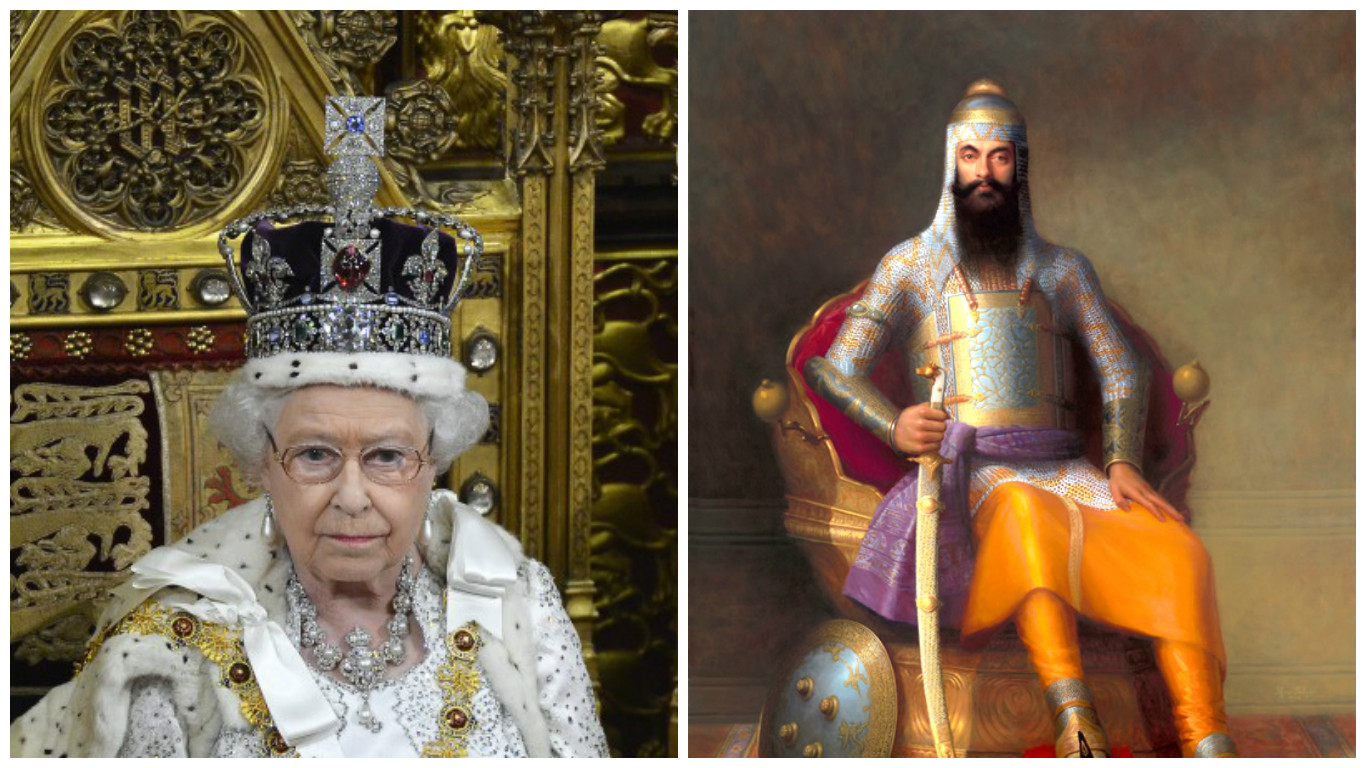
By Iram Salim (Pakdestiny.com) A Pakistani lawyer has come up with a petition in the court hoping that Pakistan may dare to ask Britain to return precious Kohi-Noor diamond that belonged to the family of Punjab ruler Meharaja Ranjeet Singh.
Petitioner Barrister Javed Iqbal Jaffrey says that Koh-i-Noor diamond was “Pakistan asset” as it is in “illegal possession” of Britain.
“The British government had refused to hand over the diamond to India. Now Pakistan should lay claim on it as it is first entitled to have it. It is the Pakistani government’s duty to bring it back,” he said.
During the hearing of the case yesterday, Lahore High Court Justice Khalid Mahmood Khan asked the petitioner to give reference of the law under which the Pakistani government could seek the return of the diamond from the British government.
The court is hearing the maintainability of the case.
It directed the federal and Punjab law officers to appear on next hearing on February 25 and give arguments about its maintainability.
Last December, the LHC Registrar office had objected to the maintainability of the petition, saying the court had no jurisdiction to hear this case against the British Queen. However, on February 8, the LHC overruled the objection and admitted the petition for hearing.
The British Queen, the British High Commission in Pakistan and the Pakistani government have been made respondents in the case.
Jaffery said the British had snatched the diamond from Daleep Singh, grandson of Maharaja Ranjeet Singh and took to the UK.
“The diamond became part of the crown of incumbent Queen Elizabeth-II at the time of her crowning in 1953. Queen Elizabeth has no right on the Koh-i-Noor diamond, which weighs 105 carats and worth billions of rupees,” he said, adding Koh-I-Noor diamond was cultural heritage of Punjab province and its citizens owned it.
Reportedly, in 1849, after the conquest of the Punjab by the British forces, the properties of the Sikh Empire were confiscated.
The Koh-i-Noor was transferred to the treasury of the British East India Company in Lahore. The properties of the Sikh Empire were taken as war compensations. Even one line of the Treaty of Lahore was dedicated to the fate of the Koh-i-Noor.
The diamond was shipped to Britain on a ship where cholera broke out and supposedly the keeper of the diamond lost it for some days and it was returned to him by his servant.
The diamond was handed to Queen Victoria in 1850. The 105.6 carat stone adorns a crown that was last worn in 1953 by Queen Elizabeth the Queen Mother at the coronation of her daughter.
Originating in the Golconda mines of central-southern India, it passed through the hands of conquering Mughal princes, Iranian warriors, Afghan rulers and Punjabi Maharajas before being surrendered by a young Sikh prince to Britain following the conquest of Punjab in 1849.
“Mountain of Light”, is a literal translation of Koh-i-Noor. It was re-cut from its original 189 carats in 1852 and currently it is on display in the Tower of London along with other precious ornaments that comprise Britain’s crown jewels.
India has made regular requests for the jewel’s return, saying the diamond is an integral part of the country’s history and culture.
India says that Koh-i-Noor was illegally acquired and demands that it should be returned along with other treasures looted during colonial rule.
The Koh-i-Noor was mined in medieval times in the Kollur mine in Andhra Pradesh’s Guntur district. The diamond was originally owned by the Kakatiya Dynasty, which had installed it in a temple of a Hindu goddess as her eye.
When Queen Elizabeth II made a state visit to India marking the 50th anniversary of independence in 1997, many Indians in India and Britain demanded the return of the diamond.
Britain has, however, consistently rejected India’s claims on the gem and during a visit to India in 2010, British Prime Minister David Cameron had said in an interview on Indian television: “What tends to happen with these questions is that if you say yes to one, then you would suddenly find the British Museum empty.” -Pakdestiny.com
